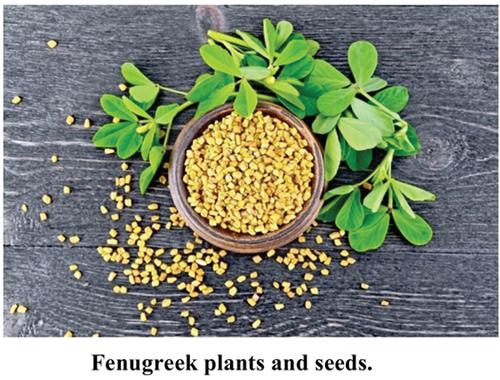Mini-Reviews in Medicinal Chemistry ( IF 3.8 ) Pub Date : 2021-03-31 , DOI: 10.2174/1389557520666201127104907 Wenli Sun 1 , Mohamad Hesam Shahrajabian 1 , Qi Cheng 1

|
Fenugreek (Trigonella foenum-graecum L.) is a native plant found in the parts of Iran to the North of India, and is presently planted also in other regions of the world. Fenugreek is considered a notable multipurpose medicinal and traditional herb in Iran, India, and China for several centuries. The most important components of fenugreek seeds are protein, neutral detergent fiber, gum, lipids, moisture, ash and starch. Fenugreek seeds and leaves are anti-cholesterolemic, anti-tumor, antiinflammatory, carminative, demulcent, deobstruent, emollient, expectorant, galactogogue, febrifuge, laxative, hypoglycaemic, restorative, parasiticide and uterine tonic and useful in burning sensation. Traditionally, fenugreek seeds being used worldwide are beneficial for bone and muscles, respiratory system, gastro-intestinal system, female reproductive system, cardio-vascular system, endocrinology and hepatic. Fenugreek helps reduce cholesterol, reduce cardiovascular risk, control diabetes, a good consolation for sore throats, a remedy for acid reflux, constipation, colon cancer prevention, appropriate for kidney trouble, skin infection, increase milk production, reduce menstrual discomfort, and reduce menopause symptoms. It is also an appetite suppressant that helps in weight loss. Both modern science and traditional medicine integration with novel technologies and discoveries will secure the cultivation of medicinal herbs and promote sustainability in the long-term and a wide-range.


























 京公网安备 11010802027423号
京公网安备 11010802027423号